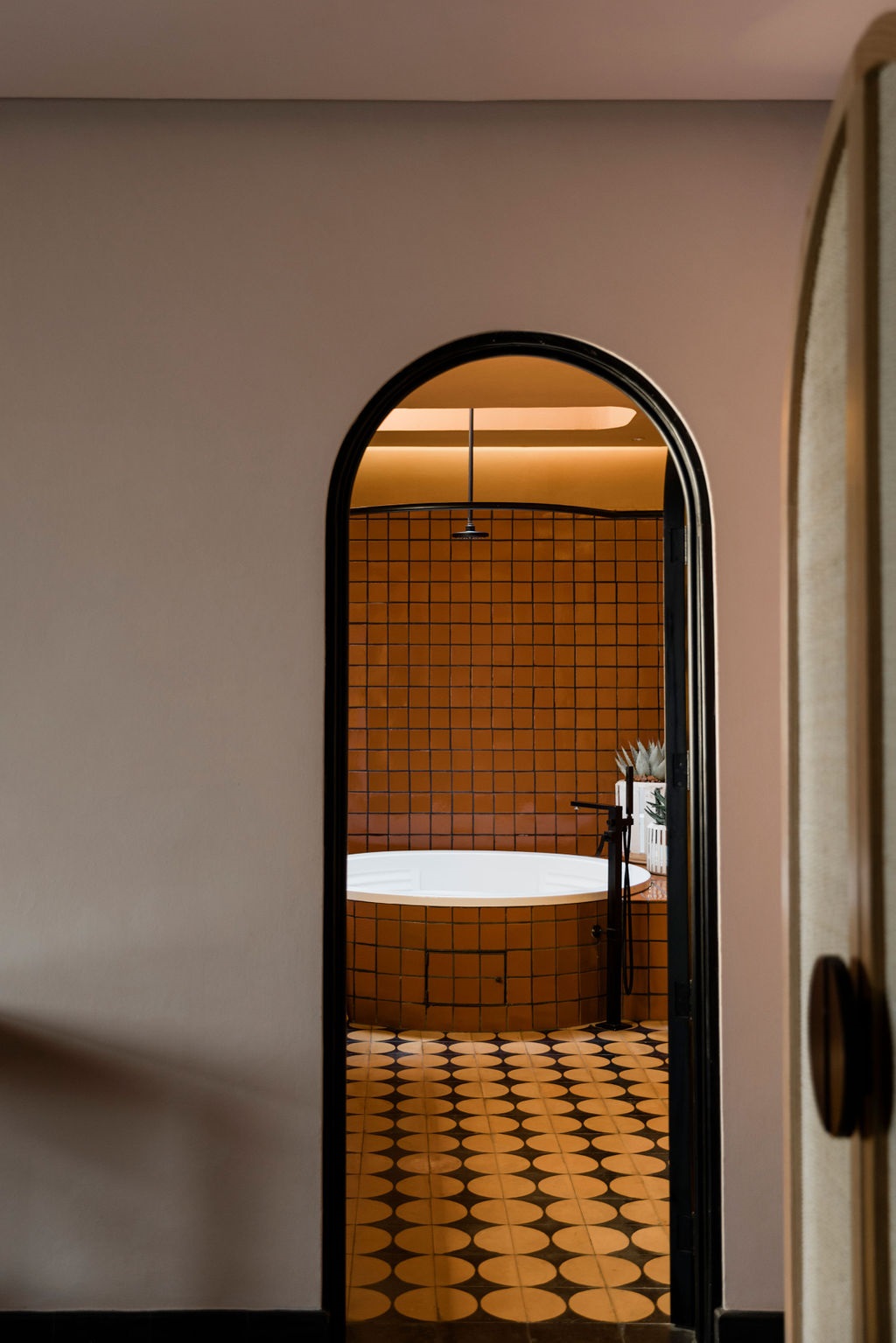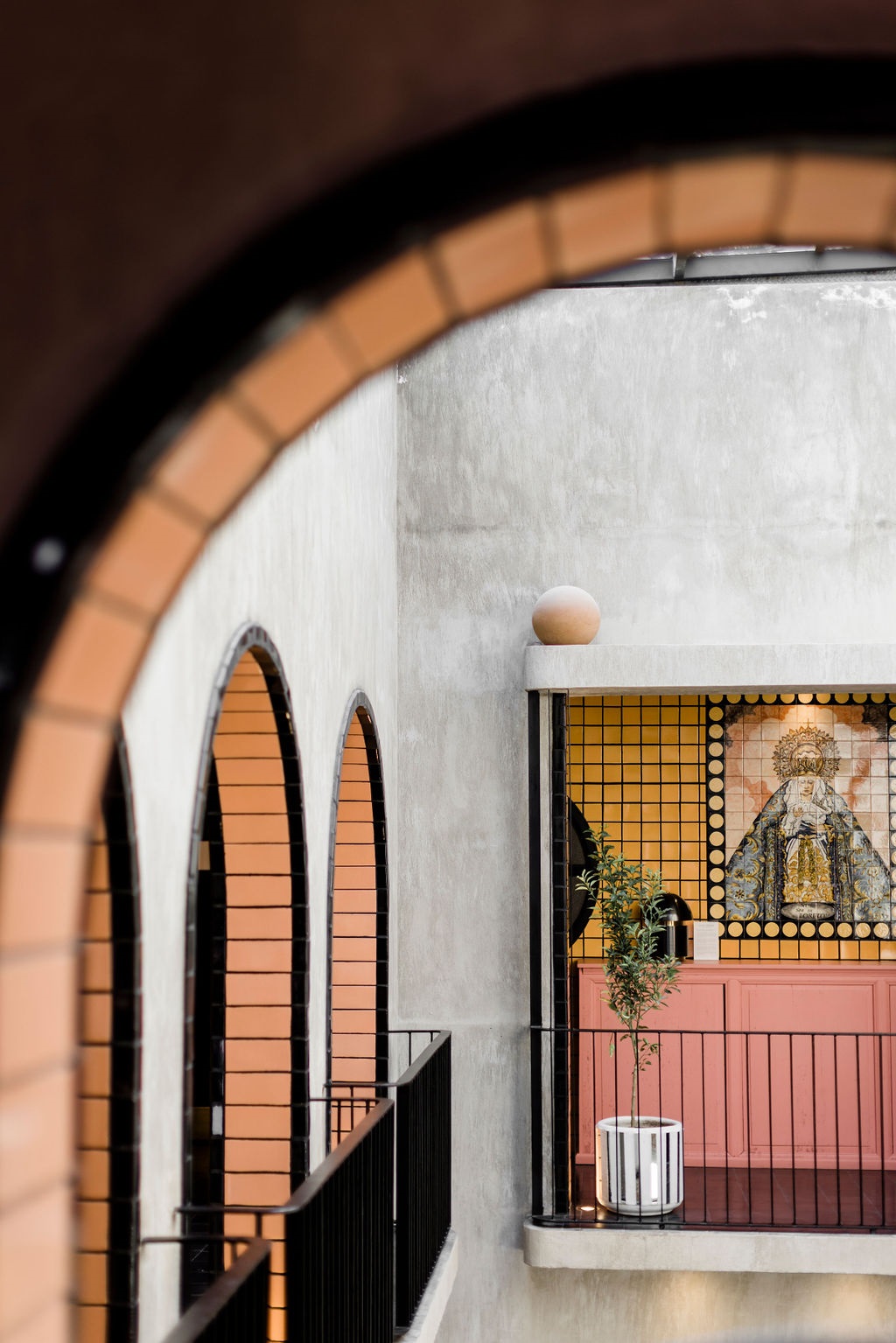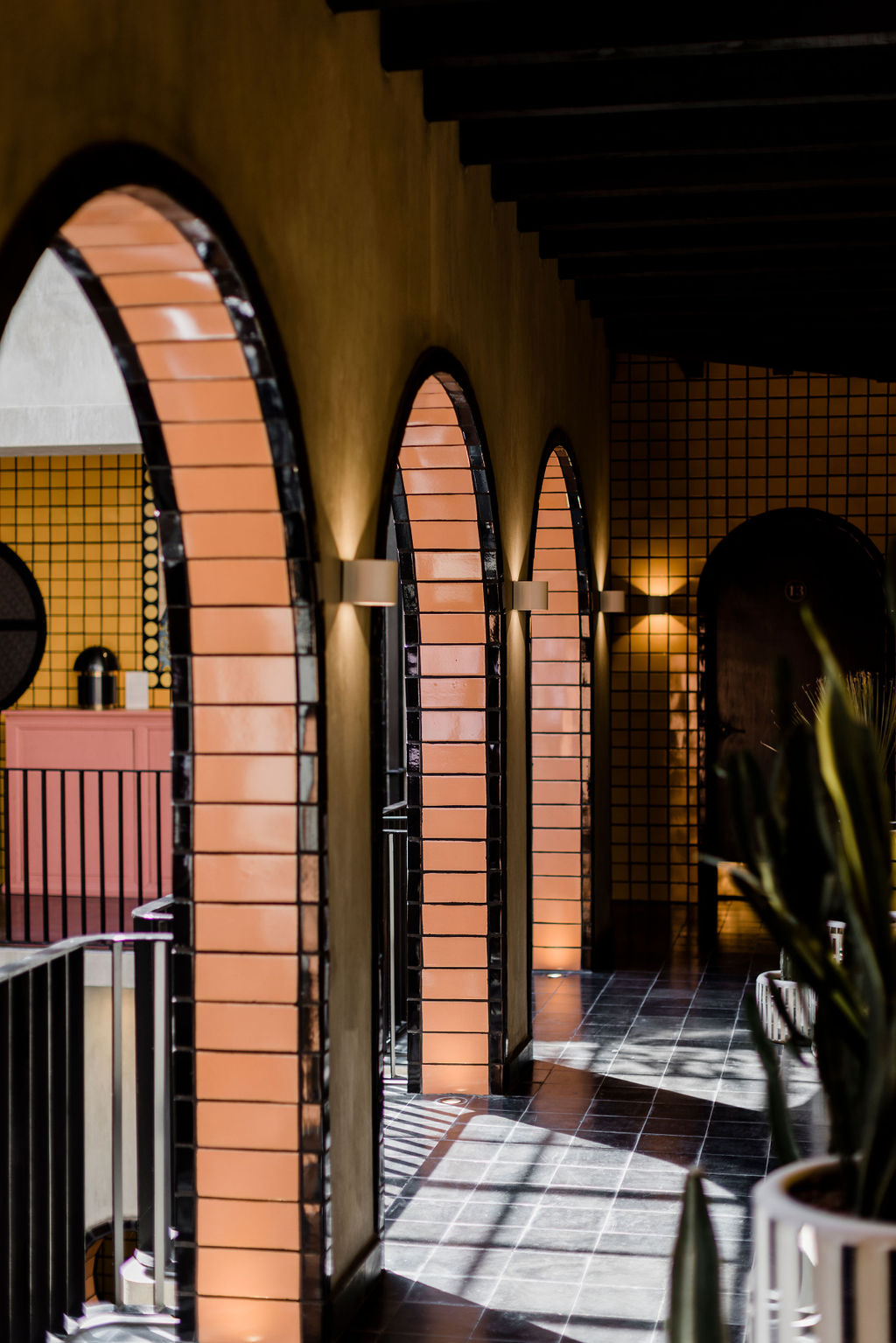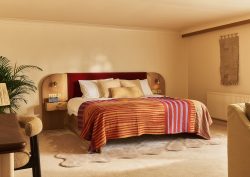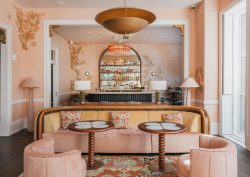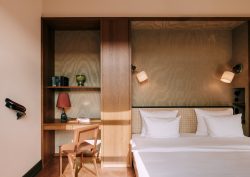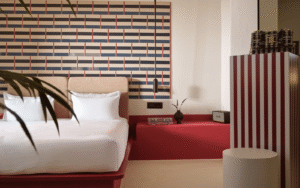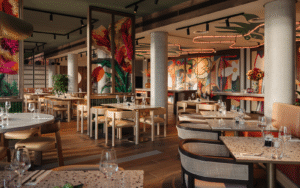Located within a carefully restored villa, Casa Hoyos combines its colonial heritage with a chic eclecticism that incorporates avant-garde elements developed through regional artisanal techniques…

Located in downtown San Miguel de Allende, the property that has been transformed by A–G Interior Studio has belonged to the Hoyos family for four generations. Today, reimagined as Casa Hoyos, it still boasts its distinctive signature colonial features, while incorporating elements of Mexican modernism, such as pure concrete, textured glass, tiling, steel framing and black contours. The design showcases a transition that goes from historic and traditional to emotional and vibrant.

Image credit: Casa Hoyos
The history of the colonial building that houses Casa Hoyos is the crucial pillar that has driven the design identity of this boutique hotel. The property was originally acquired by Julián Hoyos at the beginning of the 20th century and was the first currency exchange bureau in town. Later, Julián and his family decided to start a grain and seed store that would later be known colloquially as ‘El Banco del Frijol’ or ‘Bean Bank’ due to the singular mix of commercial activities. The sequence of the different generations of the family allowed this project to be converted into a hotel rich in details. Today, the iconic building belongs to the fourth generation, who, together with A–G Studio, pay tribute to the family legacy through the reimagination of this unique accommodation.
The starting point of the design was the style of an old Spanish manor where tradition and different metaphors speak to one another through colour and pattern. In each of its 16 guestrooms, Mexican design is introduced through unique artisanal pieces such as lamps, calaca armchairs, mirrored plant pots, and woven tapestries, which together highlight a custom-designed environment for the newest chapter in the history of this space. Yellow predominates in the palette and is a vibrant statement carried by the glazed clay tiles that, placed in a certain way, symbolise a corn cob. A range of ochre and red tones is present on different floors as well as in some wool textiles, which were handmade in the state of Guanajuato.

Image credit: Casa Hoyos
Following the guidelines of the National Institute of Anthropology and History (INAH) to conserve the nation’s heritage, the challenge was to restore the main courtyard and build from scratch, on the back of the property, a contemporary space that would strengthen and preserve the original identity of the building, giving it the genuine bohemian style that characterises the essence of San Miguel de Allende. The source of inspiration for the architectural project came from the intersection of the three key moments in the history of the property: the arrival of Julián Hoyos from Spain and his family life, the opening of the first currency exchange office and its conversion into a store of grains and seeds. Each of these moments influenced the selection of materials and decorative elements that converge and give life to the hotel.
The interior layout is concentric and the spaces of the hotel, located on the ground floor and first level, are distributed around an open central patio bordered by Andalusian-style balconies, reminiscent of a typical house in southern Spain. At the back part of the first level, the mural of a Sorrowful Virgin of Loreto – made and hand-painted in glazed Talavera from the city of Dolores Hidalgo – crowns an altar that reflects one of the most deeply-rooted religious traditions of the Iberian Peninsula, from which the Hoyos family originated. Just below the virgin is the antique piece of furniture that served as the original counter of the bank. Like this restored piece, various objects that were found in the house for years were recovered to give them a new life within the project, remaining as vestiges and witnesses of the past.

Image credit: Los Hoyos
Moving onto the rooftop, the unique location of Casa Hoyos allows visitors to enjoy the most beautiful sunsets from its terrace. There, BEKEB will delight them through an original artisanal mixology menu based on several Mexican agaves, plants, flowers and roots, all paired with tapas inspired in Mexican culinary tradition. The menu at BEKEB is crafted by creative mixologist Fabiola Padilla, who is returning to Mexico after collaborating with Enrique Olvera at Cosme, New York. The rooftop bar specialises in contemporary cocktails and its name, which refers to the Tzotzil term ‘bek’,which means seed, invites guests to reconnect with the essence of the landscape around them. Set among cactus plants, artisan furnishing, and other creative elements the atmosphere at BEKEB rediscovers the slow pleasures of life.
Main image credit: Casa Hoyos






